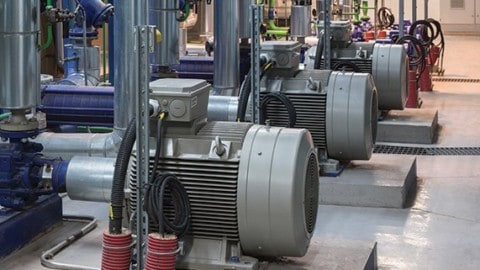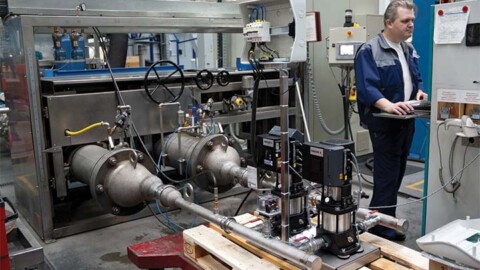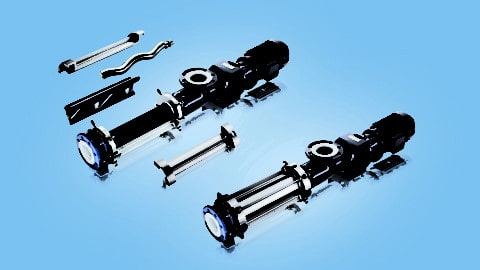The PIA’s Australian Pump Technical Handbook is a cornerstone text for the Australian pump industry and, in our opinion, a must have for anyone who deals with pumps on a regular basis. In this ongoing series, we feature abridged chapters from the classic book to showcase the various areas covered and to reacquaint readers with the technical aspects of pumps. Here, we continue our investigation into intake design.
In part two of this section on intake design we cover how to calculate the volume of a sump, in order to ensure that the pumps in the sump operate satisfactorily without any of the problems outlined in the previous article.
Optimum sump volumes
During the start-up of an electric motor, higher than normal operating currents are drawn from the power supply. This causes a transient disturbance in the supply, which results in a voltage dip, and produces significant heat energy in the motor. These effects put a limit on the maximum number of starts for a motor in a given time, and therefore on the minimum sump volume. This should be considered when deciding sump dimensions for optimum flow conditions.
Factors to consider include:
• Inlet flow to the sump
• Sump retention time
• Number of pumps required
• Discharge capacity of each pump
• Operating level of each pump
• Desirability of fixed or variable speed pumps
• Minimum cycle time for each pump
If variable speed pumps are used, the number of starts per hour ceases to be of significance and the minimum sump volume is governed by the control system for varying the pump speed. The water level can normally be held to within 500mm of a set point for this type of control.
Minimum sump volume for a one-pump system (fixed speed pump)
The minimum volume is defined by the highest start level and the lowest stop level in the sump and is given by the formula:
![]()
Where: V = The minimum sump volume
Qᵢ = Inlet flow to the sump in litres/sec
Sₘₐₓ = Motor maximum allowable starts per hour
Qₐ = Average pump flow between start and stop levels, i.e.:
Qₐ = ![]()
Where:
Q₁ = Pump flow at pump start level in litres/sec
Q₂ = Pump flow at pump stop level in litres/sec

A sump pump installed in a basement of a home with a water powered backup system.
The minimum size of the pump sump is determined by the allowable numbers of starts per hour, Smax, of the pump driver. The number of allowable starts per hour is normally a function of motor design and this information is provided by the motor manufacturer. The above formula can be used when the inflow is constant, and the pump flows are known. If a sump is being designed from scratch, then assumptions need to be made. Safe assumptions are to design the pump flow to be twice the maximum inflow. This minimum volume is calculated from:
![]()
In reality the inflow is rarely constant and will differ according to the time of day, the weather, etc. This formula will provide a calculated sump volume that is over specified for periods where the pump is inactive, i.e. during dry weather and night flows. However, it will ensure that the sump does not overflow.

Minimum sump volume for multi-pump system (fixed speed pumps)
The volume calculated using previous equation for a single pump can be used as the base for a multi-pump system with additional volume needed to be allowed for each additional pump in the system.
What this volume is, depends on a number of factors, including the start/stop sequence of the various pumps, the minimum allowable pump cycle time, the capacity of each pump in the system, how the inflow to the sump varies and if pumping sewage the possibility of it turning septic from too long in the pump sump. We recommend that this calculation be done on an individual basis by a professional engineer with experience in multi-pump system design.
In the case of a two pump system in which one of the pumps is a standby unit, the start level for the standby pump should be a minimum of 150mm above that of the working pump, this ensures that the standby pump will not accidentally start.
Summary
It is important that pump sumps are sized correctly to avoid the problems discussed in part one of this article. Model testing should be conducted to ensure that the size of pumps proposed will work properly in the sump, and wherever else it is necessary, and to confirm that the pumps and sumps will operate effectively.















